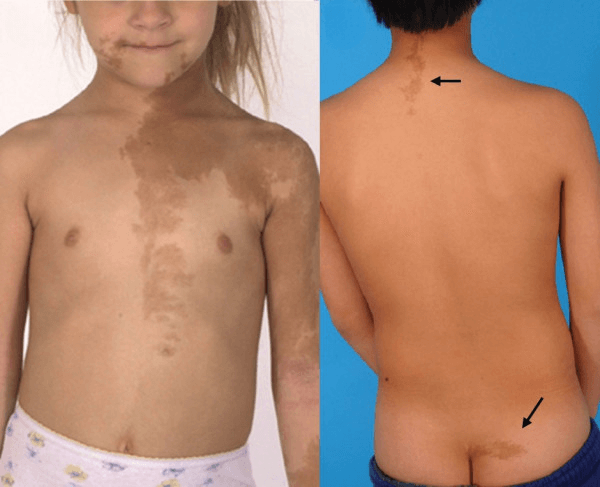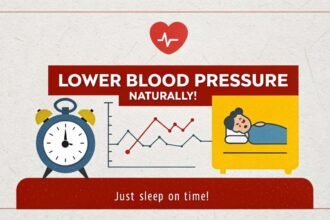Many physiological and hormonal shifts occur in teenage bodies as they enter puberty. Darkening of the skin is a prominent feature of puberty. The effects of this phenomenon on adolescents’ sense of self-worth and general health can be devastating. Insight into the causes and potential treatments for skin darkening throughout puberty can be gained by an examination of the scientific literature on the topic.
In fact, up to 90% of teenagers have some degree of skin darkening throughout puberty, as stated by the American Academy of Dermatology. While this is a perfectly normal occurrence, some teens may struggle to accept the changes in their looks, especially if they are oblivious to the scientific principles underpinning skin darkening.
This article will discuss the physiological mechanisms that cause the skin to darken during adolescence. The physiological and mental effects of this transition will be discussed, as will the function of hormones, genetics, and sun exposure. Helping adolescents feel more confident and capable is possible by increasing our knowledge of the process of skin darkening during puberty.
What is Skin Darkening?
Hyperpigmentation, or skin darkening, occurs when melanin production increases and causes the skin to darken. The pigment melanin is responsible for the natural hues of our skin, hair, and eyes. Melanin is made by melanocytes, which are found in the epidermis, the skin’s outermost layer.

Explanation of Melanin Production
The generation of melanin is controlled by a number of variables, including genetics, hormones, and UV exposure. The melanocytes’ production of melanin is a natural defense mechanism of the body that is triggered when the skin is exposed to UV radiation from the sun.
How Melanin Production Contributes to Skin Darkening
The pigment melanin plays a role in skin darkening by contributing to the skin’s deepening hue. Melanin absorbs ultraviolet (UV) light and turns it into heat, which helps prevent cellular damage from the sun. Hyperpigmentation occurs when the skin’s melanocytes are damaged as a result of prolonged exposure to UV rays, making the skin’s melanin distribution more patchy.
Types of Melanin
Eumelanin and pheomelanin are both forms of melanin. The pigment eumelanin gives skin its brown and black tones, whereas the pigment pheomelanin gives it its red and yellow hues. Darker-skinned persons have more eumelanin and lighter-skinned people have more pheomelanin in their skin.
What Causes Skin Darkening During Puberty?
Many teenagers develop hyperpigmentation (a darkening of the skin) or a change in skin tone (a lightening of the skin) during puberty. Skin darkening throughout puberty can be attributed to several reasons, including fluctuating hormone levels, time spent in the sun, and racial/ethnic background.
Changes in Hormone Levels
Hormonal shifts occur during puberty and may alter melanin synthesis, the pigment responsible for skin color. Androgens like testosterone (among others) have been shown to increase melanin formation, which in turn darkens the skin. Therefore, adolescents with elevated testosterone levels may have hyperpigmentation during the onset of puberty.
Sun Exposure
During puberty, when many adolescents spend more time outdoors, sun exposure is a common cause of skin darkening. The sun’s ultraviolet rays can cause your skin to produce more melanin, which can cause your skin to darken. Therefore, it is crucial to use sunscreen with an SPF of 30 or higher and wear protective clothing, hats, and sunglasses.
Ethnicity and Genetics
Both hereditary and environmental variables have a role in establishing an individual’s skin tone. There is more melanin in the skin of persons with darker skin tones and less in the skin of those with lighter skin tones. People of African-American, Hispanic, and South Asian descent are disproportionately affected by this phenomenon throughout adolescence. Hyperpigmentation during adolescence can also be caused by genetic diseases such as familial hyperpigmentation or melasma.
How Hormones Affect Skin Pigmentation
Skin pigmentation is just one of many biological processes that are controlled by hormones. Estrogen and testosterone are the main hormones that influence skin color.
The Role of Hormones
Melanin, the pigment responsible for skin color, is produced and controlled in large part by hormones. Ovaries and testes generate the sex hormones estrogen and testosterone, respectively. Changes in skin pigmentation can occur because of the effects of these hormones on melanocytes, the cells responsible for making melanin.
Effects of Estrogen on Skin Pigmentation
Estrogen has been shown to increase melanin synthesis, which can make skin darker. Hyperpigmentation is a common side effect of pregnancy in women because estrogen levels rise.
Melasma or chloasma is a skin disorder characterized by the development of brown spots on the cheeks, nose, and upper lip. Changes in skin pigmentation, including hyperpigmentation, have been linked to estrogen therapy.
Effects of Testosterone on Skin Pigmentation
Testosterone’s effects on skin pigmentation can be somewhat different from estrogen’s, yet it can still have an influence. Sebum, or oil secreted by the skin’s sebaceous glands, can be stimulated to create more oil by testosterone.
This can cause acne and other skin problems, including changes in skin tone. In addition, increased melanin production due to elevated testosterone levels might cause hyperpigmentation (darkening of the skin).
The Impact of Sun Exposure on Skin Darkening
Sunlight has a significant role in the development of hyperpigmentation, or the darkening of the skin. Sunburns, early signs of aging, and even skin cancer have all been linked to the sun’s harmful ultraviolet (UV) radiation. Below, I will go through the dangers of tanning beds, the effects of direct sunlight, and preventative measures you may take to keep your skin healthy.
How UV Rays a\Affect the Skin
Sunlight’s ultraviolet (UV) radiation can create mutations in skin cells’ DNA, which can eventually lead to cancer. Melanin, the pigment responsible for skin color, can be produced in response to exposure to UV rays.
Hyperpigmentation, or a darkening of the skin, can result from an increase in melanin production and, if untreated, can be permanent. Premature aging, including wrinkles, age spots, and drooping skin, can develop with prolonged sun exposure.
The Impact of Tanning Beds
Tanning beds produce dark skin by exposing users to artificial UV rays. However, tanning beds release more dangerous quantities of UV radiation, making them even more dangerous than sunbathing. The use of tanning beds has been associated with an increased risk of skin cancer, particularly the most deadly form of the disease, melanoma. This is why safer alternatives to tanning beds, such as self-tanners and spray tans, are preferable.
How to Protect the Skin From Sun Damage
Hyperpigmentation and skin darkening can be prevented by taking precautions against sun exposure. Among these are:
- Protect yourself from the elements by donning a hat, sunglasses, and long sleeves whenever you venture outside.
- Applying a broad-spectrum sunscreen with at least an SPF of 30 before going outside, and reapplying it every two hours (more often if swimming or sweating).
- Seeking out shady areas between the hours of 10 a.m. and 4 p.m.
- Keeping away from UV generators like tanning beds.
- Antibiotics and some acne treatments, among others, might enhance UV sensitivity, so it’s important to be aware of this.
- Keeping an eye out for any moles or lesions that show signs of change and consulting a doctor.
The Role of Genetics in Skin Darkening
Both hereditary and environmental variables interact to establish an individual’s skin tone. Genetic factors are crucial in skin darkening because they control how much and what kind of melanin the skin’s pigment cells (melanocytes) generate.
In this reply, we’ll talk about the hereditary elements that cause dark skin, how race affects skin tone, and what additional hereditary variables contribute to pigmentation.
Explanation of Genetic Factors
Genes that affect melanin production, melanin subtypes, and melanin distribution in the skin are just a few of the many genes that influence skin color. The amount and kind of melanin generated, for instance, can be affected by variations in the MC1R gene, which codes for a protein involved in melanin formation. Different forms of this gene are associated with a wide spectrum of skin tones.
The Impact of Ethnicity on Skin Color
The production of melanin varies greatly amongst ethnic groups, making ethnicity a crucial factor in determining skin tone. There is more melanin in the skin of people with darker skin tones and less in the skin of those with lighter skin tones.
People of African heritage, for instance, have a darker complexion than those of European descent because their skin contains more of the pigment melanin. However, due to genetic and environmental influences, there can be a wide range of skin tones even among members of the same ethnic group.
Other Genetic Factors That Contribute to Skin Darkening
There are other genes besides MC1R that can have a role in skin pigmentation. The production of eumelanin, the melanin responsible for dark skin, can be affected by mutations in the ASIP gene, for instance.
Because it is involved in melanin transport to skin cells, SLC24A5 gene variants can also influence skin pigmentation. Variations in the HERC2 gene, as well as the TYR and OCA2 genes, have been linked to differences in skin pigmentation.
The Psychological Impact of Skin Darkening During Puberty
Because of the hormonal shifts that occur throughout puberty, skin darkening often occurs. Although this is a normal part of growing up, it can have a profound emotional impact on teenagers, especially those who struggle with low self-esteem or who have to deal with criticism from others.
Here, we’ll talk about the mental effects of puberty’s inevitable darkening of the skin, including how it affects a child’s sense of self-worth, how different cultures see different shades of skin, and why it’s crucial to keep lines of communication open with adolescents going through this transition.
Relationship Between Appearance and Self-Esteem
Self-perception and social perception are both heavily influenced by outward appearance. Skin darkening during puberty can contribute to the already overwhelming sense of physical and emotional change that many adolescents experience.
Negative actions, such as withdrawing from social situations or taking risks, are often the result of low self-esteem. It’s worth noting that some people who experience skin darkening may come to appreciate their new skin color, while others may have difficulty accepting it.
Cultural Attitudes Toward Skin Color
Teenagers’ self-perceptions of their skin color may be influenced by cultural attitudes toward skin color. Lighter skin is prized in some societies, while darker complexions are sometimes stigmatized.
Teenagers, especially those who are of a different ethnicity or cultural background than their peers, may experience feelings of shame or self-consciousness as a result of these attitudes. However, there are communities where a lighter complexion is seen as a sign of weakness, whereas darker skin is viewed as a symbol of strength and life.
Open Dialogue is Crucial During Puberty for Children
When a child is going through puberty, it’s important for them to talk openly with their parents about how they feel about their child’s skin darkening and other changes in their appearance. Parents can aid their children by showing unconditional love and acceptance, talking about the importance of accepting others regardless of their appearance and addressing any hurtful words or situations their children may have experienced. Parents should listen to their children and encourage them to talk about how they feel in a secure and accepting setting.
Coping with Skin Darkening During Puberty
Many adolescents have a difficult time adjusting to the changes in their looks and health brought on by their skin’s darkening as they enter adulthood. This response will address the issue of skin darkening during puberty and offer solutions for dealing with it, such as promoting body positivity, caring for the skin, and guidance for parents and caregivers.
Tips for Maintaining Healthy Skin
Teenagers going through puberty, more than anyone else, need to take extra care of their skin. Here are some suggestions for keeping your skin in good condition:
- Use sunscreen: Protect your skin from sun damage and skin discoloration by using sunscreen with an SPF of at least 30.
- Stay hydrated: The skin may be kept moisturized and looking healthy by drinking plenty of water.
- Follow a healthy diet: You can acquire the vitamins and nutrients your skin needs by eating a diet high in fruits, vegetables, and whole grains.
- Avoid tanning beds: There is evidence that tanning beds raise the risk of skin cancer and other skin-related diseases.
- Establish a skincare routine: Maintaining healthy skin and warding off breakouts can be accomplished with the use of mild cleansers, moisturizers, and exfoliants.
Advice for Parents and Caregivers
When a teen’s skin darkens during puberty, parents and other caregivers can play a vital role in easing their transition. Advice for guardians and caregivers is as follows:
- Provide positive reinforcement: Teenagers should be encouraged to feel comfortable in their own skin and praised for practicing healthy behaviors like using sunscreen and eating right.
- Address negative comments or experiences: Adolescents who are subjected to racism should be talked to about their experiences and given guidance if they need it.
- Foster open communication: Teens should feel comfortable talking about their experiences with racism and other biases, therefore facilitating an atmosphere where they may do so openly.
Promoting Body Positivity
Teens can gain self-esteem and acceptance by learning to love and accept their bodies as they are. Some suggestions for spreading body acceptance:
- Encourage positive self-talk: Teens can benefit from learning to talk positively to themselves and concentrating on their positive qualities rather than dwelling on their weaknesses.
- Celebrate diversity: Teens should be taught to value and appreciate people of all shapes, sizes, and colors.
- Educate on media literacy: Promote media literacy skills and raise awareness of the media’s impact on adolescent self-esteem to aid in the development of a positive body image.
Frequently Ask Questions
- Skin Darkening:
- National Center for Biotechnology Information: https://www.ncbi.nlm.nih.gov/pmc/articles/PMC3543296/
- World Health Organization: https://www.who.int/news-room/q-a-detail/sun-protection
- Hormones and Skin Pigmentation:
- Journal of Clinical and Aesthetic Dermatology: https://www.ncbi.nlm.nih.gov/pmc/articles/PMC2825123/
- Skin Pharmacology and Physiology: https://www.karger.com/Article/Abstract/496415
- Sun Exposure and Skin Darkening:
- Centers for Disease Control and Prevention: https://www.cdc.gov/cancer/skin/basic_info/sun-safety.htm
- American Cancer Society: https://www.cancer.org/cancer/skin-cancer/prevention-and-early-detection/uv-protection.html
- The Skin Cancer Foundation: https://www.skincancer.org/risk-factors/sunburn/
- Genetics and Skin Darkening:
- Journal of Investigative Dermatology: https://www.sciencedirect.com/science/article/abs/pii/S0022202X1547215X
- National Human Genome Research Institute: https://www.genome.gov/genetics-glossary/Melanin











